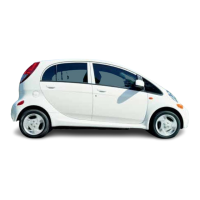l-8 Chapter 1 Tune-up and routine maintenance
4.2 The engine oil dipstick (arrow) is located on the right
(passenger’s) side of the engine compartment
3 Tuneup general information
The term tune-up is used in this manual to represent a combination of
individual operations rather than one specific procedure.
If, from the time the vehicle is new, the routine maintenance schedule
is followed closely and frequent checks are made of fluid levels and high
wear items, as suggested throughout this manual, the engine will be kept
in relatively good running condition and the need for additional work will
be minimized.
More likely than not, however, there will be times when the engine is
running poorly due to lack of regular maintenance. This is even more likely
if a used vehicle, which has not received regular and frequent mainte-
nance checks, is purchased. In such cases, an engine tune-up will be
needed outside of the regular routine maintenance intervals.
The first step in any tune-up or diagnostic procedure to help correct a
poor running engine is a cylinder compression check. A compression
check (see Chapter 2 Part D) will help determine the condition of internal
engine components and should be used as a guide for tune-up and repair
procedures. If, for instance, a compression check indicates serious inter-
nal engine wear, a conventional tune-upwill not improve the performance
of the engine
and
would be a waste of time and money. Because of its im-
portance, the compression check should be done by someone with the
right equipment and the knowledge to use it properly.
The following procedures are those most often needed to bring a gen-
erally poor running engine back into a proper state of tune.
Minor tune-up
Check all engine related fluids
Clean and check the battery (Section 8)
Check and adjust the drivebelts (Section 26)
Replace the spark plugs (Section 42)
Check the cylinder compression (Chapter 2)
Inspect the distributor cap and rotor (Section 43)
inspect the spark plug and coil wires (Section 43)
Replace the air filter (Section 29)
Check and adjust the idle speed (Section 34)
Check and adjust the ignition timing (Section 44)
Replace the fuel filter (Section 30)
Check the PCV system (Section 41)
Adjust the valve clearances (Section 15)
Check and service the cooling system (Section 40)
Major tune-up
A// items listed under Minor tune-up plus . . .
Check the EGR system (Section 45 and Chapter 6)
Check the charging system (Chapter 5)
Check the ignition system (Chapter 5)
Check the fuel system (Section 24 and Chapter 4)
t
1
MAX MIN
4.4 The oil level should be between the two marks or notches, if
it’s below the MIN line or lower notch, add enough oil to bring the
level into the operating range
4.6 Unscrew the oil filler cap to remove It - make sure the area
around the opening Is clean before unscrewing the cap; this wili
prevent dirt from entering the engine
4.8 The coolant rese&olr is located in the front corner of the
engine compartment-the level must be malntalned between the
upper and lower marks
Replace the spark plugs (Section 42)
Replace the spark plug wires, distributor cap and rotor (Section 43)
4 Fluid level checks
Note:
The following are fluid level checks to be done on a 250 mile or
weekly basis. Additionalfluidlevelchecks can be foundin specificmainte-
nance procedures which follow. Regardless of how often the fluid levels
are checked, watch for puddles under the vehicle - if leaks are noted,
make repalrs immed/ate/y.
1 Fluids are an essential part of the lubrication, cooling, brake, clutch
andwindshield washersystems. Because thefiuidsgradually becomede:
pleted and/or contaminated during normal operation of the vehicle, they

